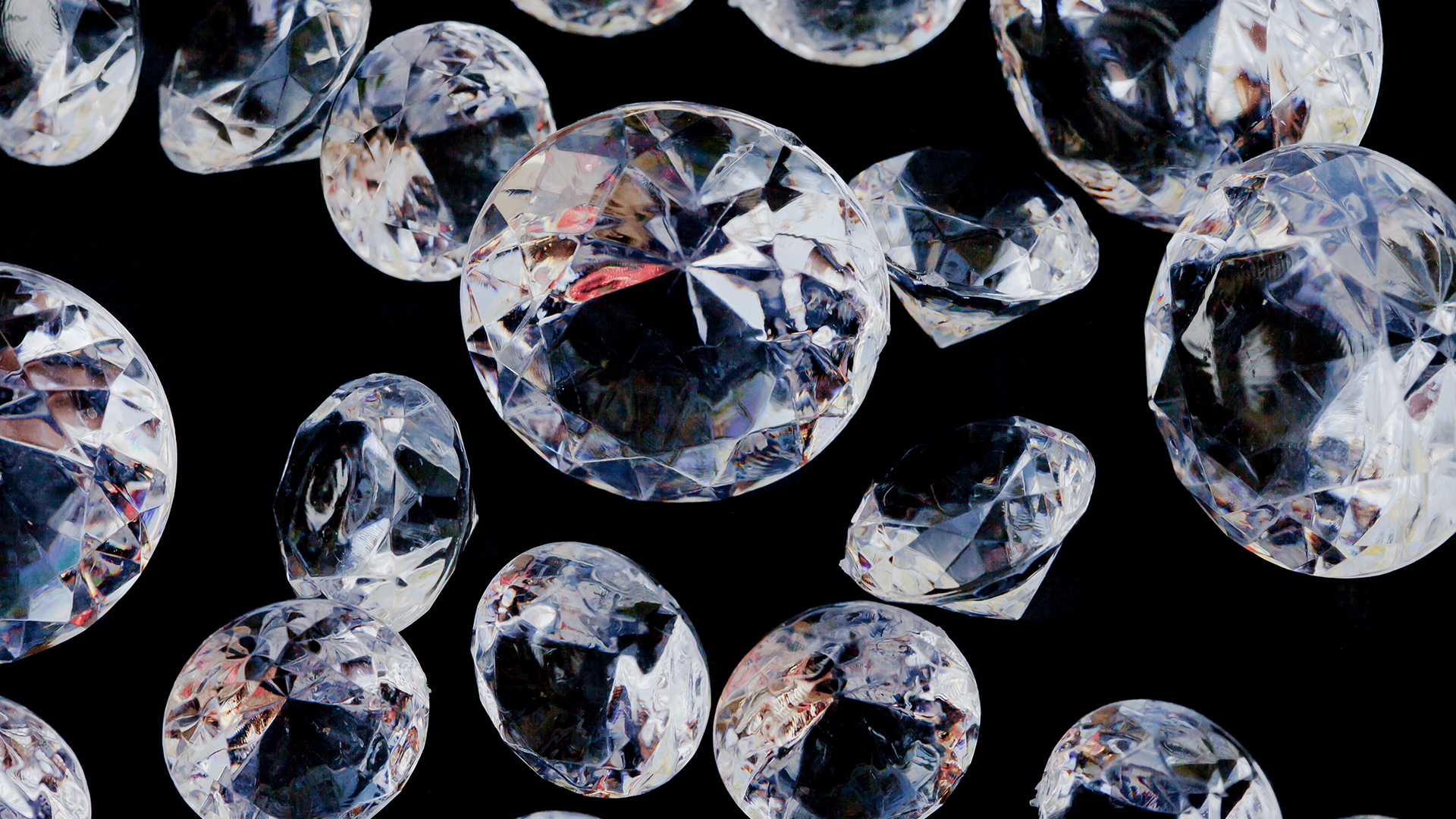
Is anything harder than a diamond?
Diamonds are naturally hard, but is there anything from Earth, space or even a lab that's harder?

Diamonds are prized for their hardness. In jewelry, they can last generations and resist scratches during day-to-day wear. As blades or drill bits, they can penetrate almost anything without getting destroyed. As a powder, diamonds polish up gemstones, metals and other materials.
So is anything harder than diamond? It turns out, figuring out the answer is, well, a bit hard.
For most practical purposes, diamond is still the hardest material, said Richard Kaner, a materials chemist at the University of California, Los Angeles. There are ways to create diamonds that are harder than standard gem diamonds. And there are other materials that might theoretically be harder than diamond, but they don't exist in a form that you could hold in your hand or use widely.
Related: Which is rarer: Gold or diamonds?
While anyone wearing a diamond ring can attest to the crystal's durability, it's important to understand that "hardness" means something very specific to scientists, said Paul Asimow, a geochemist at Caltech. It's often confused with other qualities, like stiffness or strength. These factors sometimes, but not always, correlate with hardness.
Diamond, for example, is very hard but only moderately stiff. And it's surprisingly easy to break: It shatters easily along its crystal faces, which is how gem cutters can create beautiful, multifaceted diamonds that sparkle.
Scientists measure hardness in a few different ways. Geologists often rely on a comparative metric called the Mohs hardness scale, a way to identify minerals in the field based on whether they can scratch each other. Diamond is a 10 — the top of the scale — meaning it can scratch almost anything. Soft, crumbly talc is 1.
Sign up for the Live Science daily newsletter now
Get the world’s most fascinating discoveries delivered straight to your inbox.
In the lab, materials scientists rely on a more precise measurement called the Vickers hardness test, which determines the hardness of a material based on the force required to indent it with a pointy tip. (To visualize this, imagine driving a pencil into a rubber eraser.)
Diamond is made up of carbon atoms arranged in a cubic lattice, held together by short, strong chemical bonds. This structure gives it its famous hardness. Most materials that claim to be harder than diamond come from slightly changing the classic diamond crystal structure, or swapping out some of the carbon atoms with atoms such as boron or nitrogen.
A prime contender for a material harder than diamond is lonsdaleite. Like diamond, lonsdaleite is made up of carbon atoms, but they are arranged into a hexagonal crystal structure instead of a cubic one.
"Lonsdaleite is very puzzling," Asimow told Live Science. Until recently, it had been found in such tiny quantities, mostly inside meteorites, that it wasn't clear whether it counted as a stand-alone material or if it was just a defect in the standard diamond crystal structure.
Recently, a team of scientists found micron-size lonsdaleite crystals in meteorites — still tiny, but much bigger crystals than previous finds. That's given the mineral more credibility, Asimow said. Other scientists have reported making lonsdaleite in the lab, though the crystals existed for only a fraction of a second.
So lonsdaleite is intriguing, but it won't be replacing diamond for applications like cutting, drilling or polishing anytime soon.
Playing with diamond's nanoscale structure can also make a material that's harder than a regular diamond. A material that's made up of many tiny diamond crystals will be harder than a gem-quality diamond that's a single crystal, because the nanoscale grains lock up instead of moving past one another. "Nanotwinned" diamonds, in which the grains form mirror-image patterns of each other, are reportedly double the hardness of regular diamonds.
At the end of the day, though, most scientists aren't pursuing superhard materials solely to set records — they're trying to create something useful.
"Materials scientists spend a lot of time inventing superhard materials that can be made at scale," Asimow said. "And for many purposes, being harder than diamond is not the design criteria." Scientists might want something almost as hard as diamond, but cheaper or easier to make in the lab.
For example, Kaner's lab has created a variety of superhard metals that could be used in industrial applications in place of diamond. One that's now available commercially is a combination of tungsten and boron, with a few other metals sprinkled in. The shape of the crystals gives the material different properties in different directions — so, when held in the right orientation, it can scratch a diamond, Kaner told Live Science. It's also more affordable to create, in part because it doesn't require the high pressure conditions used to make diamonds in the lab, he noted.
So while diamond in its many forms still rules the roost in terms of hardness, the classic material might face other challenges to its throne going forward.

Laurel Hamers is a writer specializing in science, medicine and the environment. Now based in Oregon, she was previously a staff writer at Science News magazine in Washington, D.C. Laurel holds a bachelor's degree in biology from Williams College in Massachusetts and is a graduate of the UC Santa Cruz Science Communication Program.










